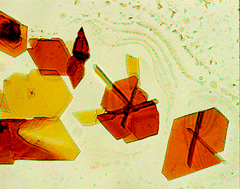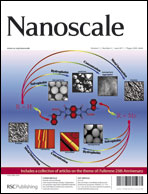The story of making fullerenes†
Abstract
Carbon is the most abundant condensable element in space. Our attempts to produce interstellar-like graphitic grains unexpectedly led to the discovery of a method for

- This article is part of the themed collection: Fullerene 25th anniversary

 Please wait while we load your content...
Please wait while we load your content...